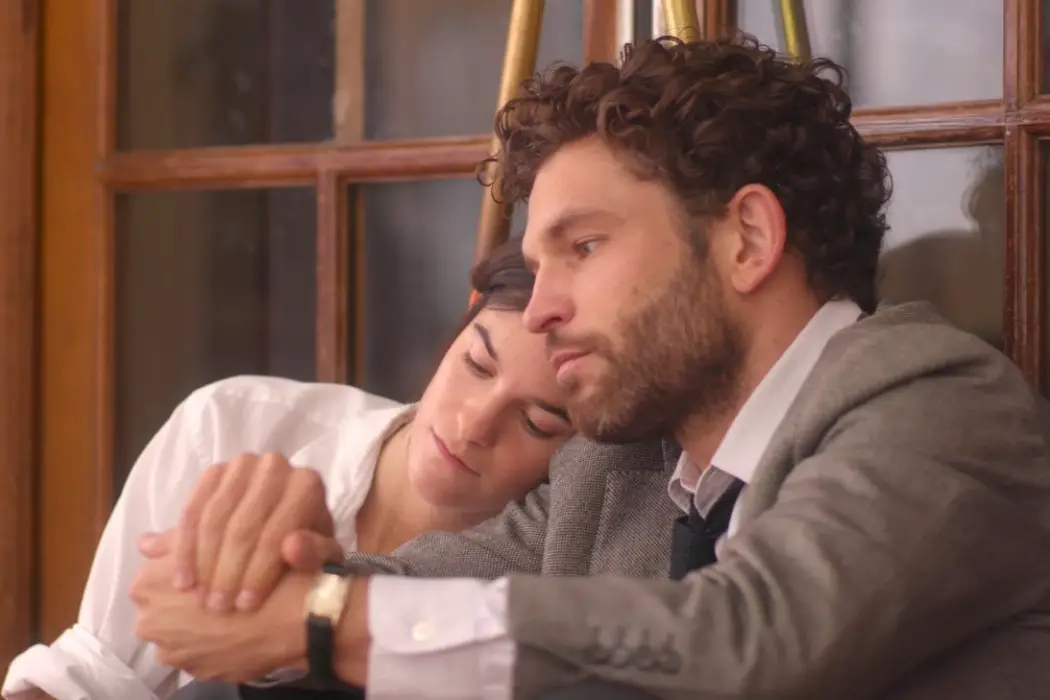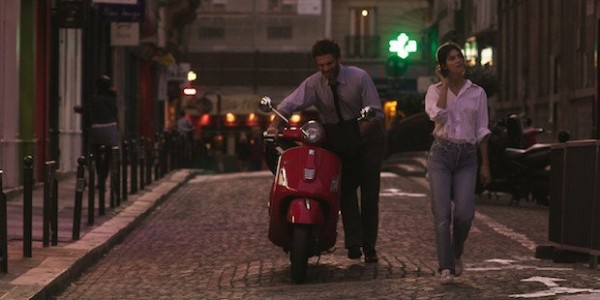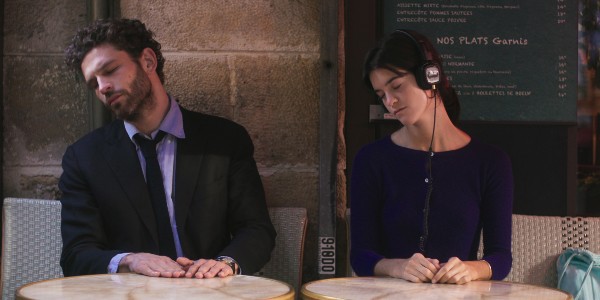SPRING BLOSSOM: First Feature Shows Promise But Doesn’t Fully Succeed

Amanda Mazzillo is a writer with an MFA in Dramatic…
Spring Blossom, written, directed, and starring Suzanne Lindon, is the story of a 16-year-old girl who falls in love with an older man. The story is simple and told often before, but not usually from the perspective of someone so close to this age. Lindon wrote the script when she was 15 and is now 21 as the film has come together.
Benefits and Hindrances of Age
Spring Blossom works the best in its depiction of teenagers and how they feel about crushes. Suzanne (Lindon) is overjoyed with Raphaël (Arnaud Valois) and we see the differences between how a young girl reacts to affection. She views this puppy love schoolgirl crush as real love, and the film comes from that perspective.
At times this works – we get glimpses into how awkward relationships can be at this age – but at other times, this fails, and we end up with declarations of love and moments of intimacy that feel forced. Raphaël goes along with her love too easily, which gives the film a feeling of being in another world, one possibly showcasing how Suzanne imagines love to be at her age. One of the most memorable moments comes when Suzanne tries to spy on Raphaël on stage, so she hides behind a tiny pole in the theater, which is clearly not hiding her at all. It is awkward and showcases how young she is.

This style sometimes works and gives depth to her character, but at other times, it leads to straightforward declarative sentences. Everyone says exactly what they mean. If Suzanne wants to convey that she feels bored with people her age, that is exactly what she says instead of allowing the character to show this emotion. But, on a somewhat related note, in the moments where Suzanne shows her feelings, alone in her bedroom or alone in the midst of a crowded party, Lindon gives a wonderful performance conveying the emotions of a teenage girl through her actions. The film could have used more moments like this and less on-the-nose dialogue exchanges.
Spring Blossom is well-shot and has a glow about it, expressing the coming-of-age of its main character. Lindon did a great job as director, and I am looking forward to more of her work in the future.
Use of Movement and Dance
Spring Blossom works the best when conversations between Suzanne and Raphaël are replaced with spontaneous dance numbers. These intimate, but not overtly so, dances give life to the film and allow a real intimacy and chemistry to form between the characters. Every time a dance sequence started, I was drawn briefly back into the film.

This is a unique and somewhat vintage technique allowing movement and dance to convey emotions when words are not strong enough. There is more development of the characters in these moments than in most of the dialogue throughout the film. The ideas expressed through the declarative dialogue are explored through emotion in these beautiful and sometimes surreal dance numbers. This also brings us back to the feeling that this love story takes place in a world unlike our own, but trapped within those confines.
Valois and Lindon both express the emotions of their characters beautifully in the most silent of moments, especially their strange and unique café dance number, where all the movement is restricted to the top of their bodies.
Lack of Emotional Engagement
Even with how much I liked these moments, and the use of small, simple cheek and neck kisses to show emotion, the dialogue and lack of knowledge of the characters hinder my enjoyment and interest in the film and its central relationship. Because I did not really know who these people were outside of their short meetings, I could not be invested in their romance.
With how abruptly the film ended, I could not appreciate the growth of Suzanne. I enjoyed that this film wanted to be more subtle about her realizations about the different kinds of love, but when emotional, challenging, and raw films like The Diary of the Teenage Girl exist, I wish the narrative explored the negative aspects of their relationship more than it did.
I wanted to fall for the characters and feel the challenges of their relationship, but not enough development was given to anyone to make a real connection. Spring Blossom is focused on Suzanne’s feelings, but these heartfelt and beautiful moments where Lindon showcases the range of emotions teenagers go through every day are lost in a sea of dialogue and motivations that do not give enough information about who she actually is as a person.
Conclusion
Spring Blossom shows potential, especially in Lindon’s acting and directing, making me look forward to her future work, but the script here falls flat. The decision to utilize dance to showcase most of the emotion between Suzanne and Raphaël works well and highlights the best aspects of the film: its performances and cinematography.
What is your favorite first feature from a director and writer? Share your thoughts in the comments.
Spring Blossom releases on May 21st in the US. For more release date information check here on IMDb.
Watch Spring Blossom
Does content like this matter to you?
Become a Member and support film journalism. Unlock access to all of Film Inquiry`s great articles. Join a community of like-minded readers who are passionate about cinema - get access to our private members Network, give back to independent filmmakers, and more.
Amanda Mazzillo is a writer with an MFA in Dramatic Writing from SCAD and a BA in Writing & Linguistics and Film Studies minor from Georgia Southern University. She enjoys writing comedy and exploring all forms of media. Her Twitter name is a bad pun: @mazzillofirefox













